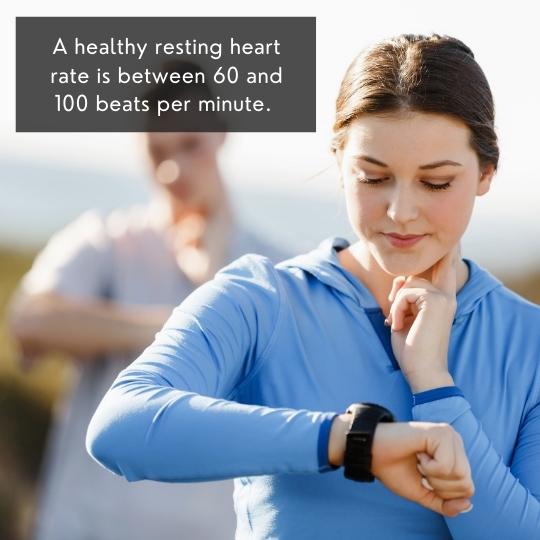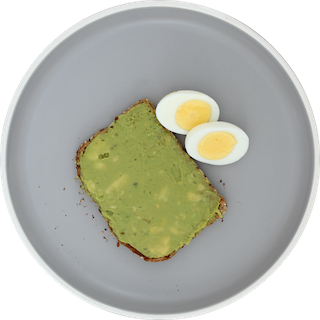What secret does your heart rate reveal about your health? When it comes to heart rates, a low heartbeat score may help you beat some disease risks. A healthy resting heart rate
(RHR) can be beneficial for your health. Take a look at what we know about the connection between a lower resting heart rate and a higher level of health. Knowing the full picture of the heart-health connection can help you get motivated to live a life with healthy meals, appropriate amounts of activity and all of the other factors that go along with getting into the correct heartbeat zone.
How Often Do You Think About Your Resting Heart Rate?
Resting heart rate refers to the number of times your heart beats per minute while you’re at rest. Most people you might poll on the street aren’t likely to know their own stats for resting heart rate. It’s simply not something we talk about enough! Do you know your resting heart rate? It’s easy to figure out. While there are many apps and devices that can help you to track your heart rate, you can also measure it using the following wrist technique:
- Place your second and third fingers from one hand on the inside of the wrist of the opposite hand just below the base of your thumb.
- You should be able to feel the movement of your pulse.
- Next, count the number of beats that occur in a 60-second span.
- Repeat a few times for accuracy.

A healthy resting heart rate is between 60 and 100 beats per minute. However, many factors can impact heart rate. People who are fit tend to have lower resting heart rates than people who don’t exercise regularly. In addition, factors like health conditions, medications and genetics can all influence your resting heart rate.
Making Sense of Your Resting Heart Rate
Focusing on the range for your resting heart rate can be much more important than obsessing over a specific number. A normal resting heart rate for women and men is between 60 and 100 beats per minute. However, trying to get to the extreme on either end isn’t necessarily something to strive for.
When your heart rate is lower, your heart can pump more blood with each contraction. This leads to a steady heartbeat.
However, bradycardia is a condition where the resting heart rate is considered too slow. Generally, it refers to a resting heart rate under 60 beats per minute. Before feeling alarmed, what is considered too slow is dependent on many factors including age and physical health. Many athletes and physically active adults have RHR under 60 beats per minute. And it’s not uncommon for a person’s heart rate to slow down below 60 BPM during sleep. A sign that a slow RHR is potentially too low is when you’re experiencing dizziness and shortness of breath when resting.
The opposite of a low resting heart rate is a high resting heart rate. When your resting heart rate is consistently above 100 beats per minute, your risk for a cardiovascular event is higher. When your heart rate is high, your heart is working harder to finish every contraction. As a result, your heart could potentially become overstressed.
How Your Resting Heart Rate Impacts Your Health
Resting heart rate is something that researchers studying cardiovascular health have been focused on for years. There are mountains of data pointing to the connection between heart rate and health. In a 2013 study, researchers tracking 3,000 men over a period spanning 16 years discovered that a high resting heart rate was closely linked with the following:
- Lower levels of physical fitness.
- Higher blood pressure.
- Higher body weight.
- Increased levels of circular blood fat.
The most concerning finding of this study was that a higher resting heart rate increased the risk for premature death. When heart rates reached between 81 and 90 beats per minute, the risk of death doubled. For participants with resting heart rates above 90, the risk for death was tripled.
Getting in the Zone: Are There Ways to Reduce Resting Heart Rate?
A healthy resting heart rate is the result of a complicated amalgam of health-related factors. The good news is that most people can make strides with reducing resting heart rate to reach an optimal zone after struggling with high resting heart rates. If you’re just now discovering that your resting heart rate is slightly higher than what would be considered ideal, it’s essential to know about some outlying factors that can be inflating your heart rate.
Stress and anxiety are two contributors to high resting heart rates that are often overlooked. When we’re feeling stressed and anxious, the adrenal gland releases a “stress hormone” called cortisol as part of the body’s natural “fight or flight” response. While this response is designed to keep us alive by throwing our response into overdrive at the sign of danger, it robs years from your life if you allow stress levels to stay elevated. That’s because cortisol causes both your heart rate and blood pressure to stay elevated. While it may not seem like the most satisfying answer, the reality is that taking steps to become more relaxed is vital for stabilizing your resting heart rate.
It’s also known that keeping cholesterol levels healthy can help with maintaining a low resting heart rate. That’s because cholesterol restricts blood flow through the blood vessels and arteries. As a result, your heart needs to try to operate much faster to keep blood moving. Unfortunately, this can tax your heart to its breaking point. Cholesterol levels are closely linked with diet. In fact, diet is one of the most powerful tools we can use to achieve a lower heart resting heart rate.
Which Foods Can Lower Your Heart Rate?

First, cutting out sodium is a great way to naturally bring down your heart rate without any drastic lifestyle changes. Many people find that switching from processed foods to naturally flavorful foods helps them to reduce salt intake without feeling deprived. It’s also known that foods high in potassium can reduce the impact of sodium on blood pressure. Some potassium-rich foods to add to your heart-healthy diet include:
- Avocados.
- Dairy.
- Bananas.
- Melons.
- Leafy green vegetables.
- Potatoes and sweet potatoes.
- Tuna.
- Salmon.
- Beans.
- Nuts and seeds.

Reducing your intake of processed sugars and refined carbohydrates is also vital for achieving a healthy heart rate. It’s also known that eating foods rich in omega-3 fatty acids can help reduce heart rate. One meta-analysis published in 2012 found that consumption of omega-3 fatty acids significantly reduced heart rate. Fish is considered to be the best source of natural omega-3 fatty acids. That means that entrées like Broiled Blue Circle Salmon or Tilapia With Grits and Walnuts are perfect for someone looking to stay satisfied without making a heartbeat blunder. For those who aren’t fans of fish, there are still plenty of ways to get in those omega-3 fatty acids naturally through diet. Avocados are very high in omega-3 fatty acids. That makes options like guacamole and avocado toast very attractive.
Don’t Forget Exercise
Nutrition is primarily considered to be the most important factor in a good resting heart rate. However, peppering in some regular exercise while staying on track with meal prep can only make things better. How much exercise do you need to reduce your heart rate? First, knowing the type of exercise that makes the biggest impact is important. According to one study, the average 55-year-old adult only requires one hour per week of high-intensity aerobic training to significantly lower resting heart rate. We also know that keeping up with exercise is the key to keeping the heart stronger. That’s because the heart becomes stronger with more exercise. Using exercise to “train” your heart to get to a place where it pumps more blood with each beat means that your heart doesn’t need to work harder to catch up! This is where you get a lower resting heart rate.
When you don’t know where to start with an exercise plan, there’s one thing to know—simply following the American Heart Association’s recommendation of getting in at least 150 minutes of moderate-intensity aerobic activity per week should be enough to keep your heart fit. If you’re pressed for time, consider the American Heart Association’s alternate recommendation of fitting in 75 minutes of vigorous activity every week.
Final Thoughts: Achieving A Good Resting Heart Rate Resting Heart Rate Comes Down To Lifestyle
Are you unhappy with your resting heart rate? Change is possible. Remember that giving your heart a rest through diet is the best way to speed up your vitality! Consider doing meal prep to ensure that you have low-sodium, heart-healthy foods waiting for you at every meal to avoid the trap of grabbing for foods that are quick and easy.


